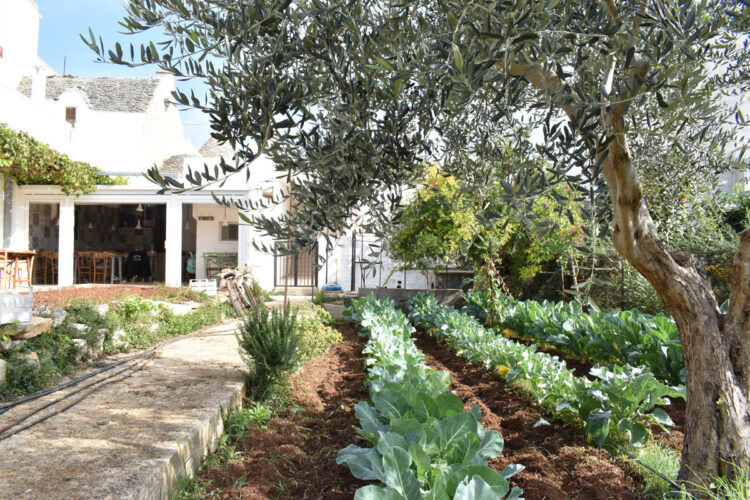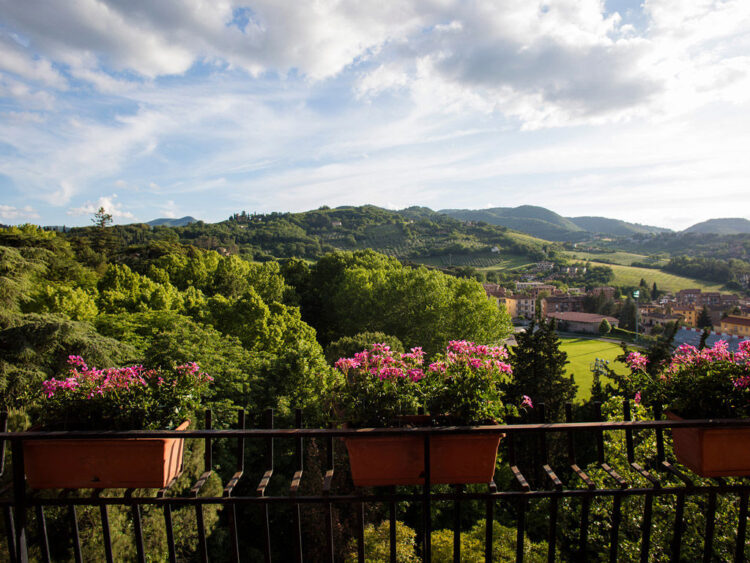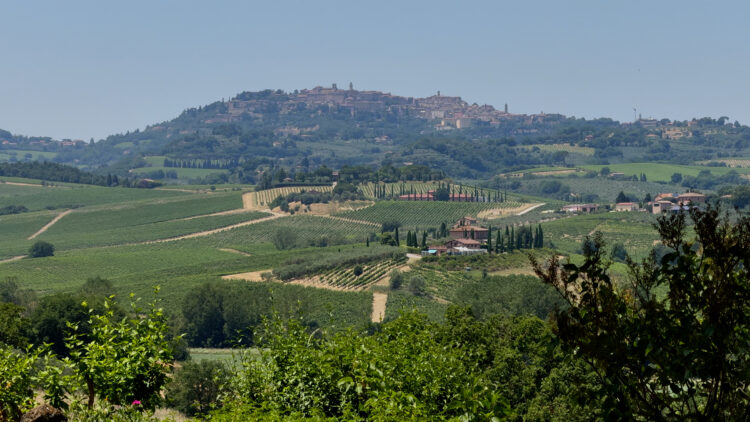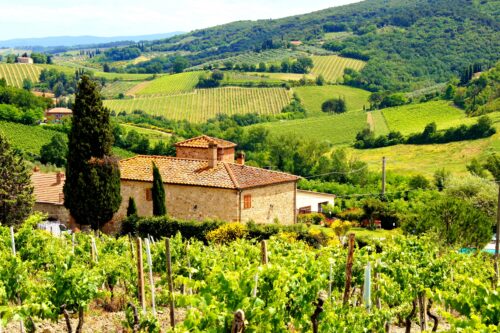 https://www.magaritours.com/wp-content/uploads/2025/05/A-local-bread-shop-in-Alberobello-500x375.jpeg
A local bread shop in Alberobello
https://www.magaritours.com/wp-content/uploads/2025/05/A-local-bread-shop-in-Alberobello-500x375.jpeg
A local bread shop in Alberobello
Why you won’t find menus in the best places to eat in Italy
Read More
You’ve had an authentic Roman holiday queuing for the Colosseum, caught a gondola in Venice, climbed Brunelleschi’s dome in Florence, and posed with the leaning tower of Pisa. It was beautiful, but it was busy.
Now imagine a different Italy…
One where you’re tasting olive oil at the farm that pressed it, learning to shape tortelloni from someone’s nonna, or gathering at a family-run agriturismo for a slow meal as the sun sinks behind the vines. That’s the Italy waiting for you now.
Italy still has secrets to share if you know where to look – and at Magari, we’ve been finding them for years, and we’re happy to share them with you now.
In this journal, we’ll explore the four lesser-known regions of Italy that you should consider when you’ve done all the “tourist-y” stuff, so by the end, you’ll be informed and excited to take your next adventure…


Lombardy, pronounced “Lom-Buh-Dee”, is Italy’s most overlooked region – and one that rewards those willing to wander. Lake Iseo offers something increasingly rare in Italy’s lake district: space to breathe. While crowds flock to Como and Garda, Iseo remains refreshingly low-key. Monte Isola, the lake’s car-free island, is home to fishing families who’ve worked these waters for generations.
For an underrated Italian city break without the crowds, look no further than Lombardy. You’ll find Piazza della Loggia humming with life, as Brescians gather to enjoy coffee and watch the day unfold in this historic square. Just a short walk away stands Brescia Castle, a medieval fortress with some phenomenal views across the city and a peek into local history.
Wander the cobbled streets of Bergamo, one of the must-see cities in Italy, where the smell of fresh espresso fills quiet piazzas lined with medieval streets and churches. In the evening, venture to Castello di Grumello for a private wine tasting and sample vintages that are normally only enjoyed by locals.
Or head to Rota d’Imagna, sip wines in hidden cellars, learn pasta-making from locals, and experience the region in a way few travellers ever do.

Puglia, pronounced: “Poo-Le-Uh”, is a true Italian hidden gem, packed with crystal-clear waters, breathtaking views, and mouthwatering cuisine.
Puglia solved the overtourism problem by staying largely under the radar – and that’s part of what makes it so special. While the Amalfi Coast groans under summer crowds, Puglia’s coast offers equally stunning scenery with a fraction of the chaos.
Stay near the UNESCO-listed Alberobello and experience the region at its own pace: drive a vintage Fiat through the Valle d’Itria, press mozzarella under centuries-old olive trees, and taste Primitivo wines in tucked-away cellars few travellers ever see.
Venture inland to Matera’s Sassi caves for a small group bread-making experience, before exploring Puglia’s hidden corners via intimate food experiences, from olive oil tastings to pasta workshops, behind the doors that most visitors never open.
For a true taste of local life, stop by Trattoria Terra Madre – a must-visit for genuine Puglian flavours prepared with care using traditional recipes and seasonal local produce.
“Do you know what the difference is between a trattoria and an osteria? Trattorias are reasonably sized traditional restaurants, offering family-friendly food that focuses on regional dishes, whereas Osterias, are usually small, family-run almost cafe-style eateries that offer a more rustic and authentic experience, with a smaller, often handwritten menu, made up of simple local food and wine.” – Jill Gambling

Umbria, pronounced “Umm-Bree-Ah”, has a way of staying with you. Mornings roll in with mist over the hills while hilltop towns wake slowly. This region, rich with history, welcomes travellers looking for something truly authentic and understated.
Skip the crowds in Spoleto and instead step inside Bevagna’s family-run salumerias, tasting cured meats perfected over generations. In Gubbio, wander medieval lanes while uncovering local legends like the Fontana dei Matti, best told by locals who know them well.
For a charming stay, Hotel dei Duchi in Spoleto offers cosy rooms and friendly hospitality right in the heart of the town – it’s a perfect base for exploring Umbria’s hidden gems.
With small groups, you can experience Umbria off the beaten path: sharing a meal in Orvieto’s Etruscan catacombs, tasting Montefalco’s signature Sagrantino at family wineries, or catching Spello’s Infiorate flower festival, packed with celebrations – and far away from the crowds.

Tuscany, pronounced locally as “Tos-Ka-Na”is a spectacular region full of hidden gems, like Castel del Piano, a quiet corner of south Tuscany where life still follows its own pace. Here, the connection between farm and table is strong, as families continue to work the land the way their grandparents taught them.
Wine remains at the heart of the region. Small, family-run wineries like Bindella Wine Estate keep traditional winemaking alive, making wine the way they always have. Just past the vineyards, small cheese farms dot the rolling hills, still using hands-on methods passed down through generations.
Along Maremma’s less-travelled shores lie small fishing villages, where fresh seafood is a daily ritual. A short journey inland leads to volcanic caves and Etruscan ruins – layers of history reserved for a discerning few.
For travellers looking beyond the usual, these must-see places in Italy offer the chance to connect with people and places where locals live what they love.

One of the best places to visit in Italy for history and art, Sicily also serves up plenty for food lovers to get excited about. But the best bits? Most travellers never find them.
Taste wines and enjoy traditional meals at working agritourism estates like Baglio Fontana, where 19th-century farms sit among gorgeous lemon orchards and local families tell stories about Sicily’s tuna fishing traditions over home-grown wines.
In Modica, explore the Antica Dolceria Bonajuto for a private chocolate tasting that uncovers centuries-old techniques and the stories behind each recipe, while local guides bring the town’s architecture to life.
Along Sicily’s coast near Selinunte, you can enjoy delicious, freshly caught seafood with views of the ancient Greek temples – one of the must-see sites in Italy that few get to enjoy. Then explore Palermo’s markets with local guides who can show you hidden vendors and artisans off the usual tourist paths.
Wondering where to holiday in Italy if you’ve seen the big three? The real magic happens off the beaten path, where the pace is slower and locals still run things their way.
If you’re ready to see the real Italy, explore its lesser-known regions with a small group and expert guides who know the stories behind every village, vineyard, and kitchen, then choose Magari.
See Italy the way it’s meant to be seen. Browse our unique holidays and holiday packages, and sign up for our newsletter to be the first in line for our new tours and insider experiences.
For more booking information or to speak with the team, get in touch – we’d love to help plan your perfect Italian escape.
Buone vacanze!
 https://www.magaritours.com/wp-content/uploads/2025/05/A-local-bread-shop-in-Alberobello-500x375.jpeg
A local bread shop in Alberobello
https://www.magaritours.com/wp-content/uploads/2025/05/A-local-bread-shop-in-Alberobello-500x375.jpeg
A local bread shop in Alberobello
Read More
 https://www.magaritours.com/wp-content/uploads/2024/01/Tuscany-Italy-500x333.jpg
Tuscany, Italy. A typical view of a villa and rolling Tuscan countryside with vineyards all around.
https://www.magaritours.com/wp-content/uploads/2024/01/Tuscany-Italy-500x333.jpg
Tuscany, Italy. A typical view of a villa and rolling Tuscan countryside with vineyards all around.
Read More
 https://www.magaritours.com/wp-content/uploads/2024/01/Wine-glasses-and-bottles-14802278-123RF-500x757.jpg
3 wine glasses and two bottles of wine, red and white wine
https://www.magaritours.com/wp-content/uploads/2024/01/Wine-glasses-and-bottles-14802278-123RF-500x757.jpg
3 wine glasses and two bottles of wine, red and white wine
Read More